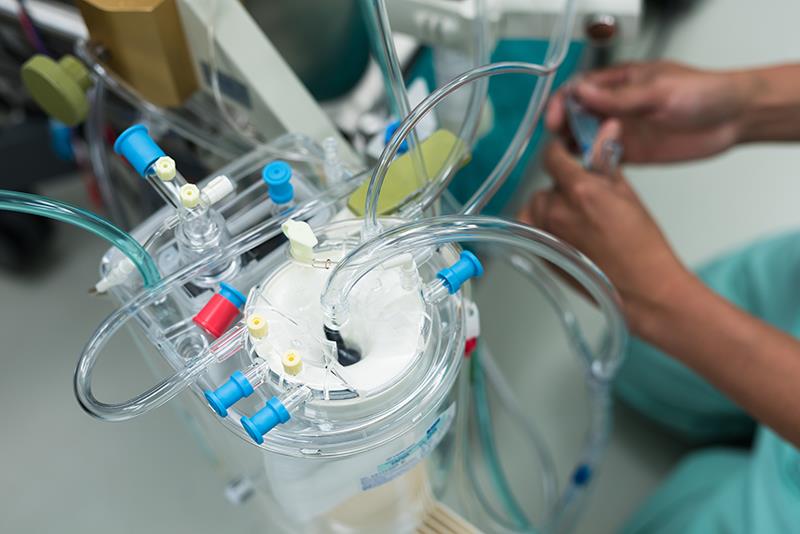Minimally invasive ECC may play a role in reducing post-cardiac surgery SAEs





The use of minimally invasive extracorporeal circulation (MiECC) instead of conventional cardiopulmonary bypass during cardiac surgery significantly reduces the relative risk of a composite of 12 postoperative serious adverse events (SAEs), according to results from the COMICS randomized trial.
In the primary outcome analysis, the risk of experiencing ≥1 qualifying SAEs was 26.8 percent lower with MiECC up to 30 days after surgery (risk ratio [RR], 0.732, 95 percent confidence interval [CI], 0.556–0.962; p=0.025), after adjusting for stratification factors and centres. [Perfusion 2024;doi:10.1177/02676591241258054]
However, the absolute risk did not differ significantly in the secondary analysis, even though primary endpoint SAEs occurred less frequently in the MiECC arm vs the conventional ECC (CECC) arm (9.7 percent vs 13.2 percent; risk difference, −3.5 percentage points; p=0.073).
“This finding was of borderline significance,” wrote Professor Gianni Angelini, a cardiac surgeon at the Bristol Heart Institute, University of Bristol, Bristol, UK, on behalf of the COMICS investigators. However, when contrasting the results from large-scale, published meta-analyses, “the magnitude of the treatment effect for the primary outcome was clinically important and consistent with effects observed previously.”
Pragmatic design
The implications of the results were limited by the early termination of the trial due to lagged recruitment during the COVID-19 pandemic. Investigators planned to recruit 3,500 patients across 20–30 centres; however, only 1,084 patients from 14 centres had been enrolled. [Perfusion 2021;36:388-394]
Still, COMICS remains the largest randomized trial comparing MiECC with CECC. Moreover, it was designed as a pragmatic trial, allowing for the use of any type II, III, or IV MiECC rather than a specific MiECC circuit.
The intention-to-treat population comprised 1,071 adults aged <85 years (median age 66 years, 83.1 percent male, 29.5 percent with left ventricular ejection fraction ≤50 percent) undergoing elective or urgent cardiac surgery, either coronary artery bypass grafting (84.4 percent), aortic valve replacement (9.1 percent), or both concurrently (6.5 percent).
The 12 qualifying postoperative SAEs were all-cause death, myocardial infarction, stroke, bowel infarction, stage 3 acute kidney injury, reintubation, tracheostomy, mechanical ventilation for >48 hours, reoperation, percutaneous intervention, sternal wound infection with dehiscence, and culture-confirmed septicaemia.
Deaths occurred at a similar rate between the two arms (1.5 percent vs 1.9 percent; RR, 0.796, 95 percent CI, 0.364–1.740; p=0.568).
There was also a significant benefit of MiECC vs CECC regarding certain measures of health-related quality of life. Patients in the MiECC arm self-rated their EuroQol 5-dimension 5-level (EQ-5D-5L) visual analogue scale score higher overall by a mean difference of 2.6 from baseline to 90 days post-surgery (p<0.001). However, MiECC did not promote the achievement of perfect health (ie, a score of 1) as measured by the EQ-5D-5L index score (p=0.151).
“The continuing convergence of CECC and MiECC technologies may make future, adequately powered trials of MiECC challenging because any difference in outcome between the technologies is expected to decrease,” concluded Angelini in light of COMICS's limitations.